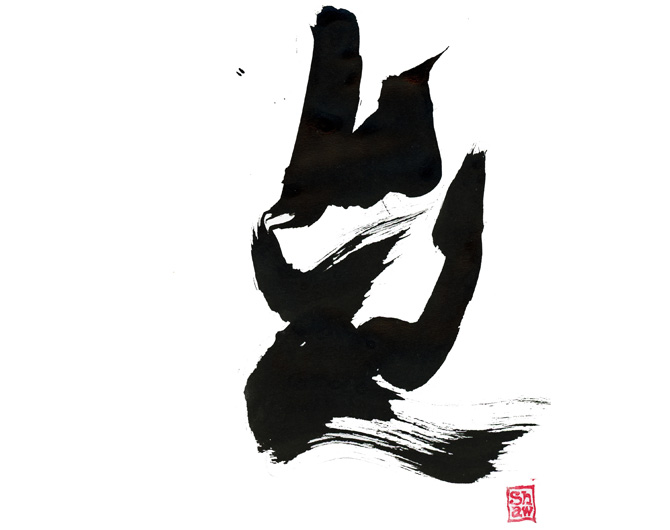The Scott Shaw Blog
Be Positive

Be Positive

Siddhartha Gautama, known as the Buddha, has long commanded scholarly attention for his journey to enlightenment and the profound doctrines he imparted. In contrast, considerably less focus has been devoted to his only child, Rāhula. Nevertheless, Rāhula’s life presents valuable insight into the interplay of personal legacy, familial obligation, and the renunciation intrinsic to Buddhist philosophy.
Birth and Early Life
Rāhula, whose name translates to “Fetter,” or, “Bond,” was born in the royal palace of Kapilavastu to Prince Siddhartha and Princess Yasodhara. His birth is recognized within Buddhist tradition as a pivotal moment, coinciding with Siddhartha’s decision to renounce his royal heritage in pursuit of spiritual awakening. The arrival of a son embodied both emotional joy and a symbolic connection to worldly responsibilities, reinforcing the very attachments the Buddha would ultimately leave behind.
Raised amidst the Shakya kingdom’s affluence by his mother and extended family, Rāhula’s early years unfolded in the absence of his father, who had embarked on his quest for enlightenment—a journey that would shape religious history.
Buddha’s Return
Upon attaining enlightenment, the Buddha returned to Kapilavastu to disseminate his teachings among family and subjects. This significant reunion brought him face-to-face with his wife, Yasodhara, and his son, Rāhula. According to canonical texts, Yasodhara encouraged Rāhula to seek out his father and request his inheritance. In response, Rāhula approached the Buddha, who discerned that true inheritance lay not in material wealth but in spiritual guidance. Consequently, he instructed the disciple Sariputta to ordain Rāhula as a novice monk (sāmaṇera), marking a watershed in the tradition.
Rāhula’s Ordination and Monastic Life
Rāhula became the inaugural sāmaṇera in the Buddhist sangha, thereby establishing a precedent for ordaining children. Yasodhara’s consent underscored her deep faith and willingness to uphold the Dharma, despite the sorrow expressed by family members such as King Suddhodana. The event underscored the transformative influence of the Buddha’s teachings.
As a novice, Rāhula received guidance from the Buddha and leading disciples, including Sariputta and Moggallāna. He distinguished himself through humility, discipline, and an eagerness to learn. The Buddha frequently cited Rāhula as an exemplar in sermons emphasizing honesty, self-discipline, and mindfulness—virtues foundational to monastic life. “The “Rāhula Sutta,” for instance, records the Buddha’s counsel to his son regarding introspection and ethical behavior.
The Teaching of Rāhula
The discourses delivered to Rāhula represent cornerstone texts in Buddhist ethics. The Buddha advocated rigorous truthfulness, self-reflection, and the exercise of restraint and compassion. Notably, in the, “Ambalatthika Rāhulovāda Sutta,” he advised Rāhula to assess the consequences of any action before undertaking it, a guideline integral to Buddhist practice.
Attaining Enlightenment
Over time, Rāhula advanced steadily in the monastic discipline, strictly adhering to precepts and deepening his understanding of the Dharma. Tradition holds that Rāhula ultimately achieved Arhatship, attaining liberation from the cycle of rebirth, “Saṃsāra,” at the age of eighteen. Both Theravāda and Mahāyāna traditions celebrate this accomplishment, venerating Rāhula as a model of youthful dedication and spiritual attainment.
Rāhula in Buddhist Literature and Iconography
Rāhula occupies a nuanced position in Buddhist literature, depicted as an earnest and obedient figure in scriptures. His story is referenced in Jataka tales and other commentaries to underscore themes of obedience, discipline, and the universality of spiritual potential.
In Buddhist iconography, Rāhula commonly appears as a young monk alongside the Buddha and prominent disciples. His example continues to inspire novice practitioners, reinforcing ideals of virtue and perseverance in monastic settings worldwide.
While a significant figure in Buddhism and a symbol of the potential for spiritual growth, Rāhula is said to have died at a young age, before the Buddha and some of his other prominent disciples.
Legacy and Significance
Rāhula’s biography encapsulates fundamental Buddhist themes: the tension between attachment and liberation, the significance of renunciation, and the accessibility of enlightenment across social boundaries. His narrative not only exemplifies the expansive reach of the Buddha’s teachings but also highlights the sacrifices made by those within the Buddha’s immediate circle.
For many adherents, Rāhula epitomizes the transformation of filial piety into spiritual aspiration. His journey demonstrates that the transmission of wisdom and the alleviation of suffering constitute the greatest inheritances a parent can bestow.
Rāhula’s transition from prince to devoted monk, culminating in enlightenment, illustrates the profound efficacy of the Dharma. His life serves as enduring testimony to the possibilities inherent in renunciation and spiritual inquiry. Today, Rāhula is honored as an emblem of youthful virtue and the transcendent nature of the bonds between parent and child, as realized in the collective pursuit of truth and liberation.
In summary, Rāhula, the son of the Buddha, emerged as a dedicated monastic, attained enlightenment, and remains a venerated figure whose legacy conveys enduring lessons in humility, discipline, and spiritual awakening.